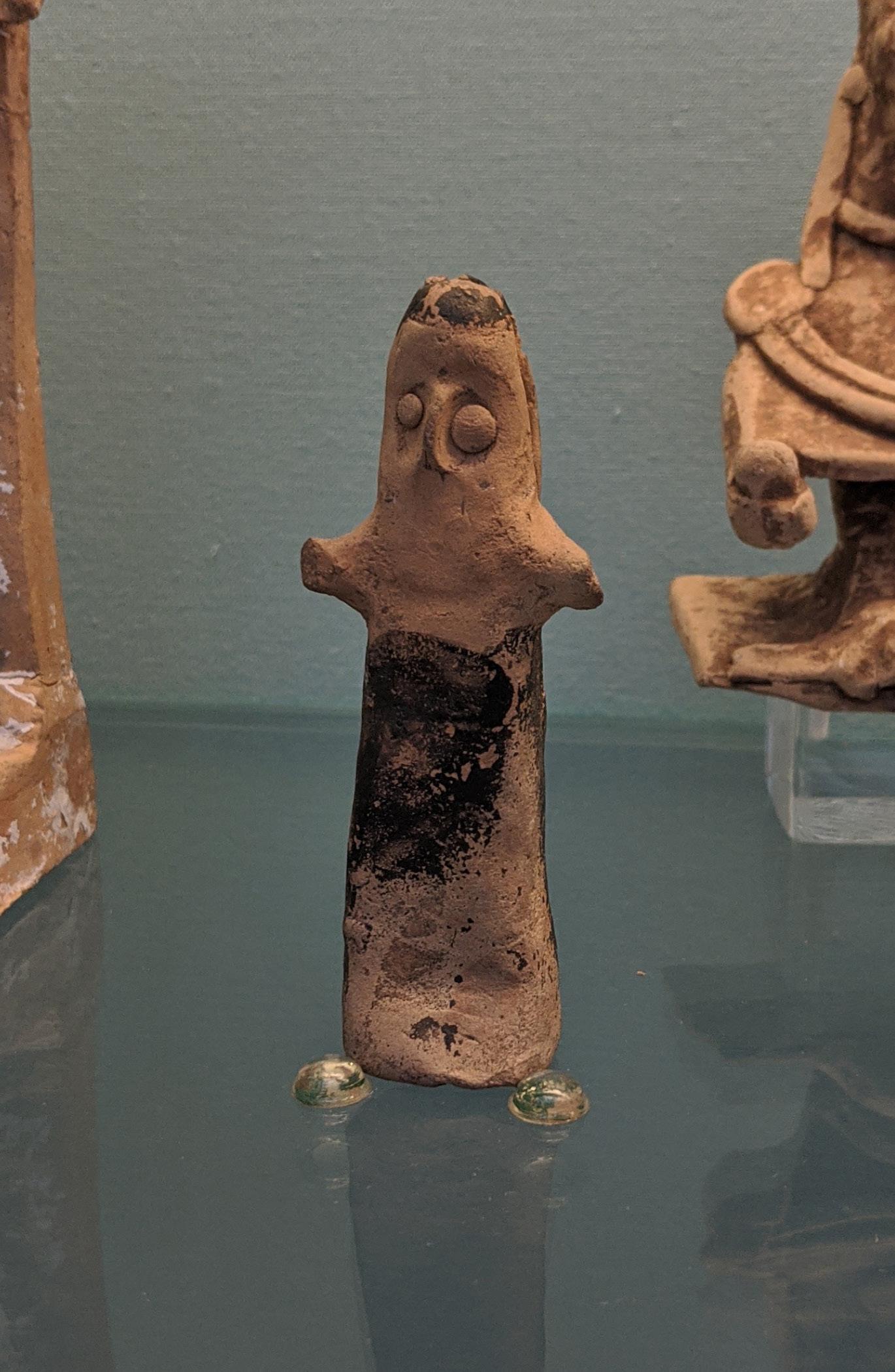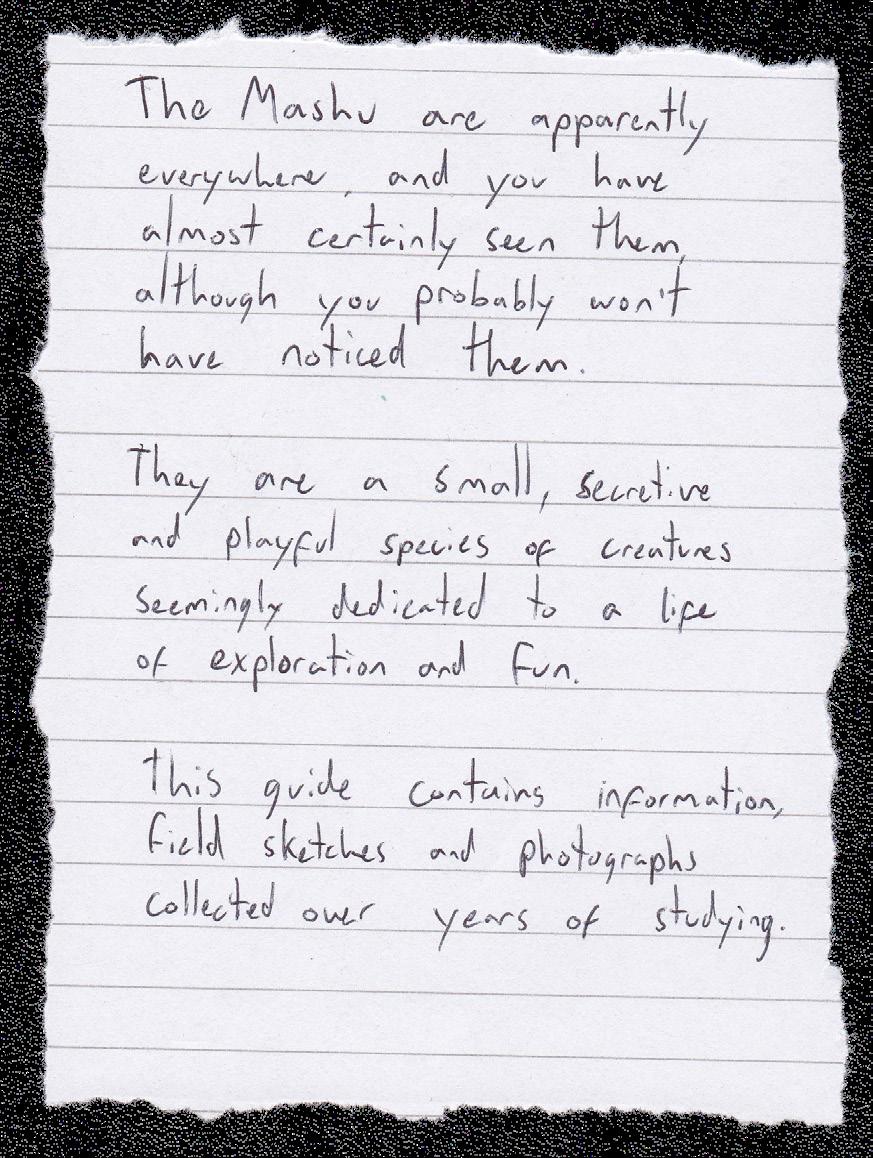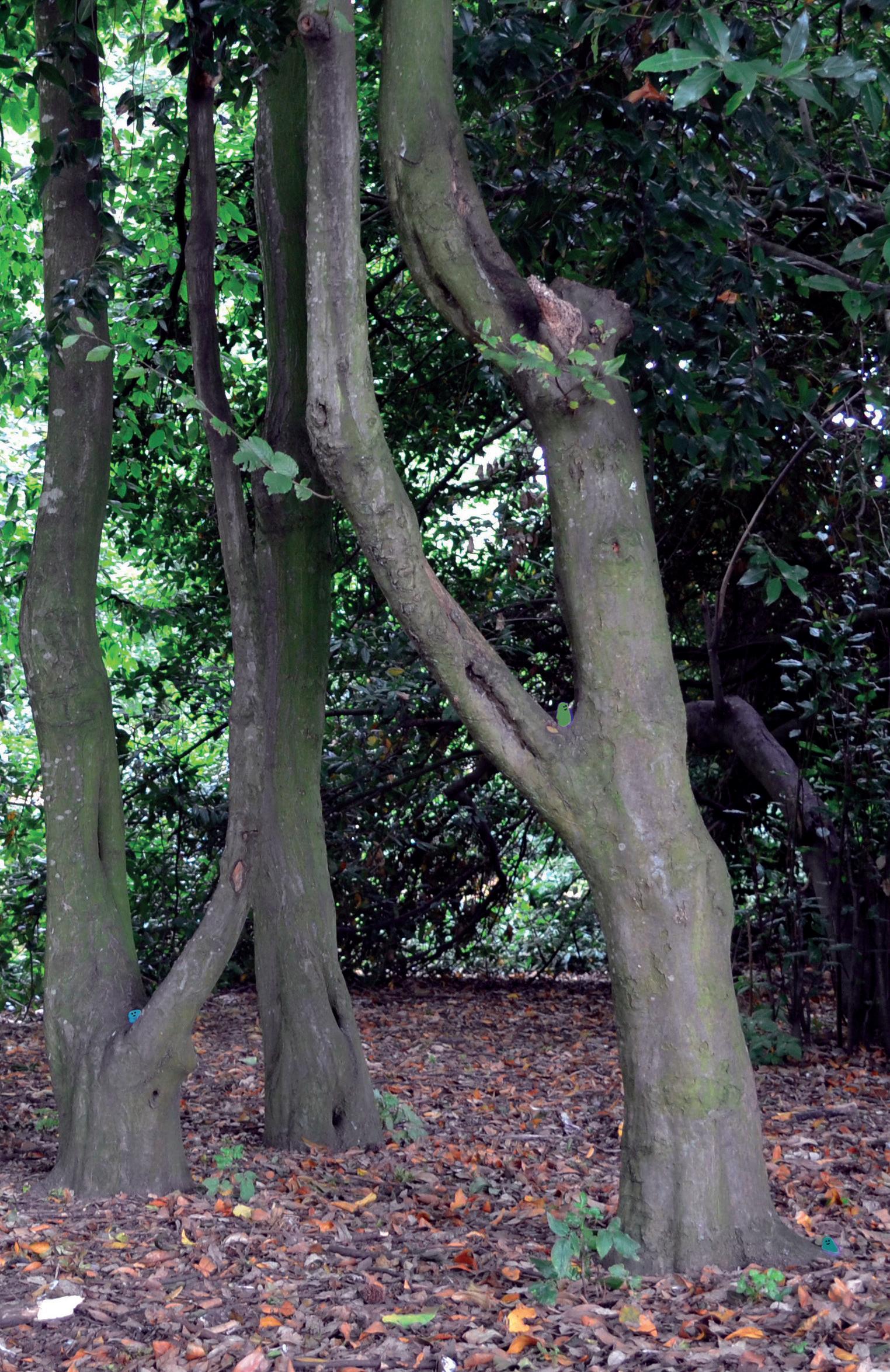
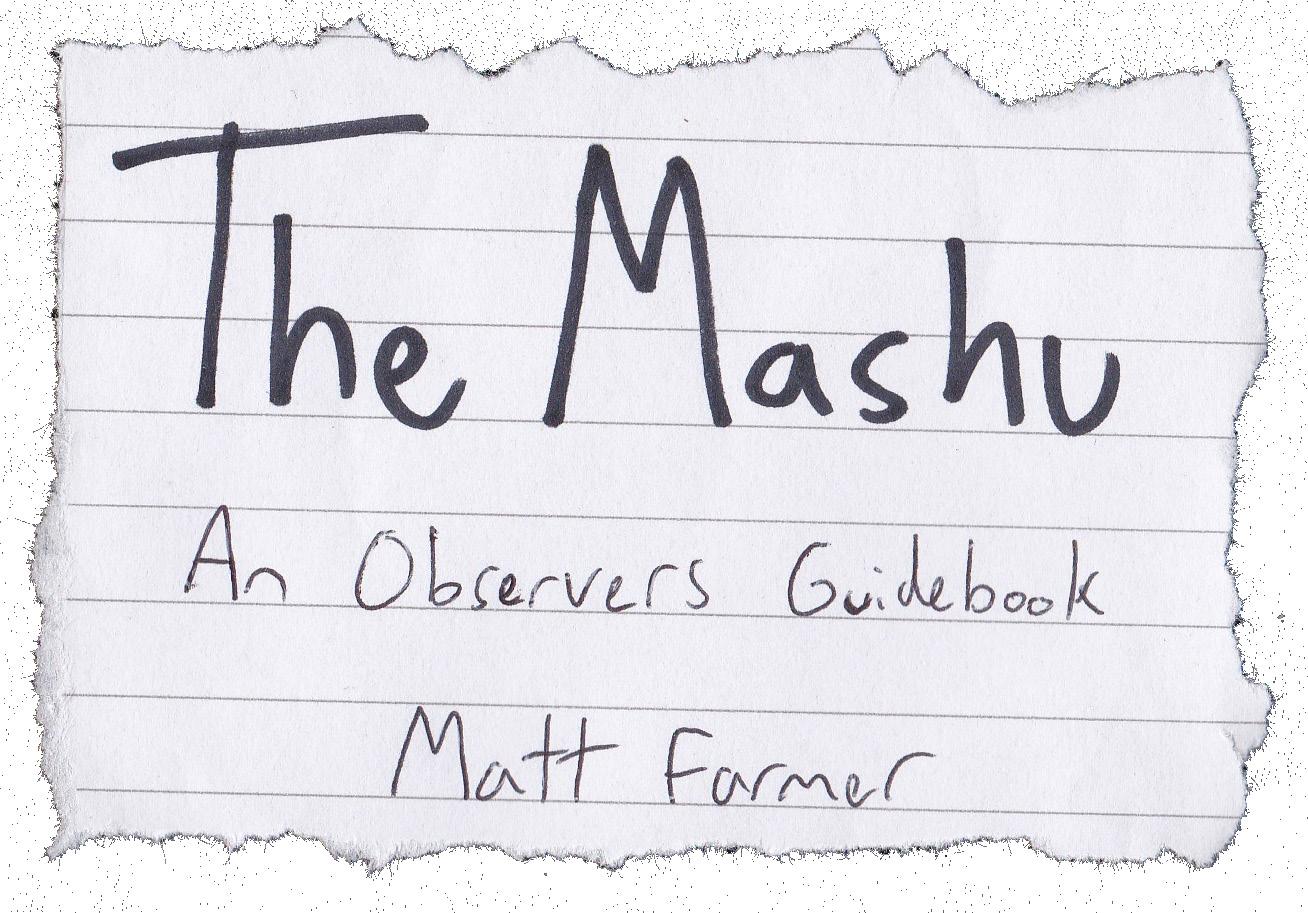










The Mashu are apparently everywhere, and you have almost certainly seen them, although you probably won’t have noticed them.
I first became aware of the Mashu in my parents’ garden in the summer of 2017.
Initially I just caught movements out the corner of my eye and assumed that maybe they were mice.
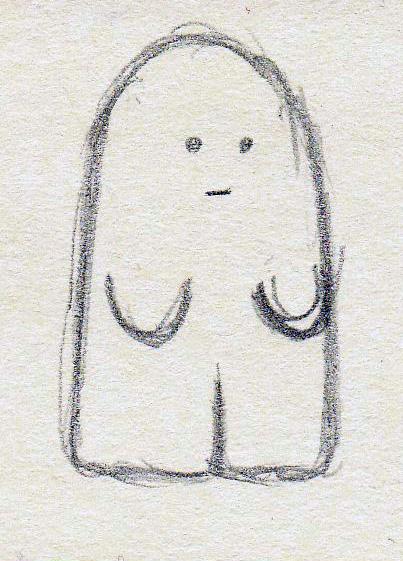
However, once I started looking out for these ‘mice’, I managed to see the creatures themselves, and they were unlike anything I’d seen before.

I assembled sketches, attempting to piecing together the fleeting glimpses I’d managed to get, with limited success.
As I got to know their behaviours, allowing me to observe them more clearly, I managed to improve the accuracy of my sketches.
I eventually managed to photograph a group of three enjoying the sun.
It was a full year before I discovered there was a second form of Mashu, which was about half the size.
What follows is a summary of my findings, having carefully observed the Mashu over the years since, accompanied by a selection of photos and field sketches collected over the years.
Matt Farmer
Portsmouth, UK. May 2021



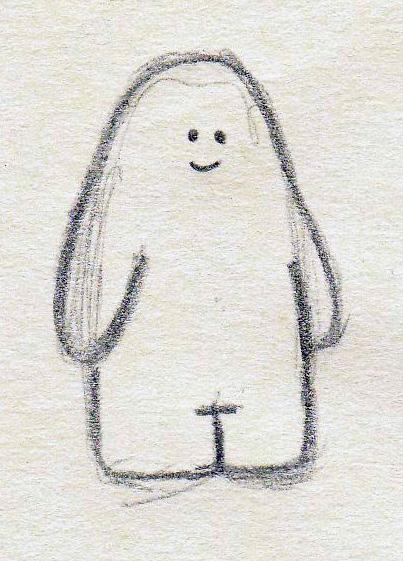

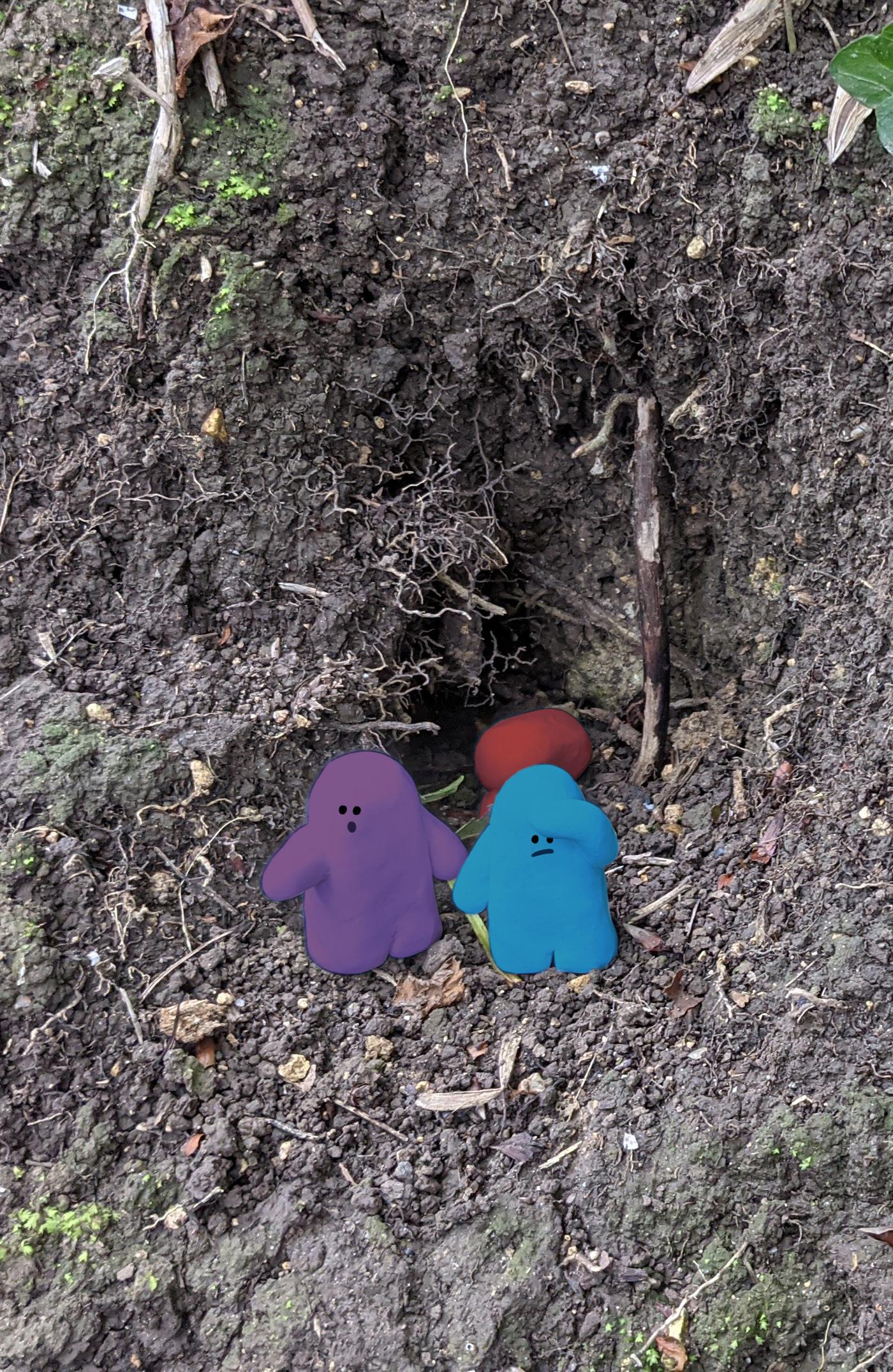




The Mashu are small, friendly, social creatures. There are two types of Mashu form: a four limbed variety, and a smaller two limbed variety.
The first stand about 4cm (1.75 inches) tall, and are vaguely humanoid, walking upright on short legs, with two arms.
The second type are about half the height and consist of a round body on two stumpy legs.
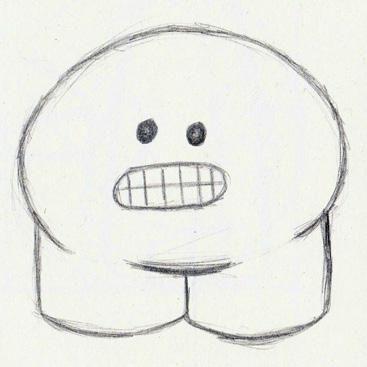
Both varieties have small, black, round eyes, and mouths with tongues, and some form of teeth.


They also come in a variety of colours, ranging across the visible spectrum.

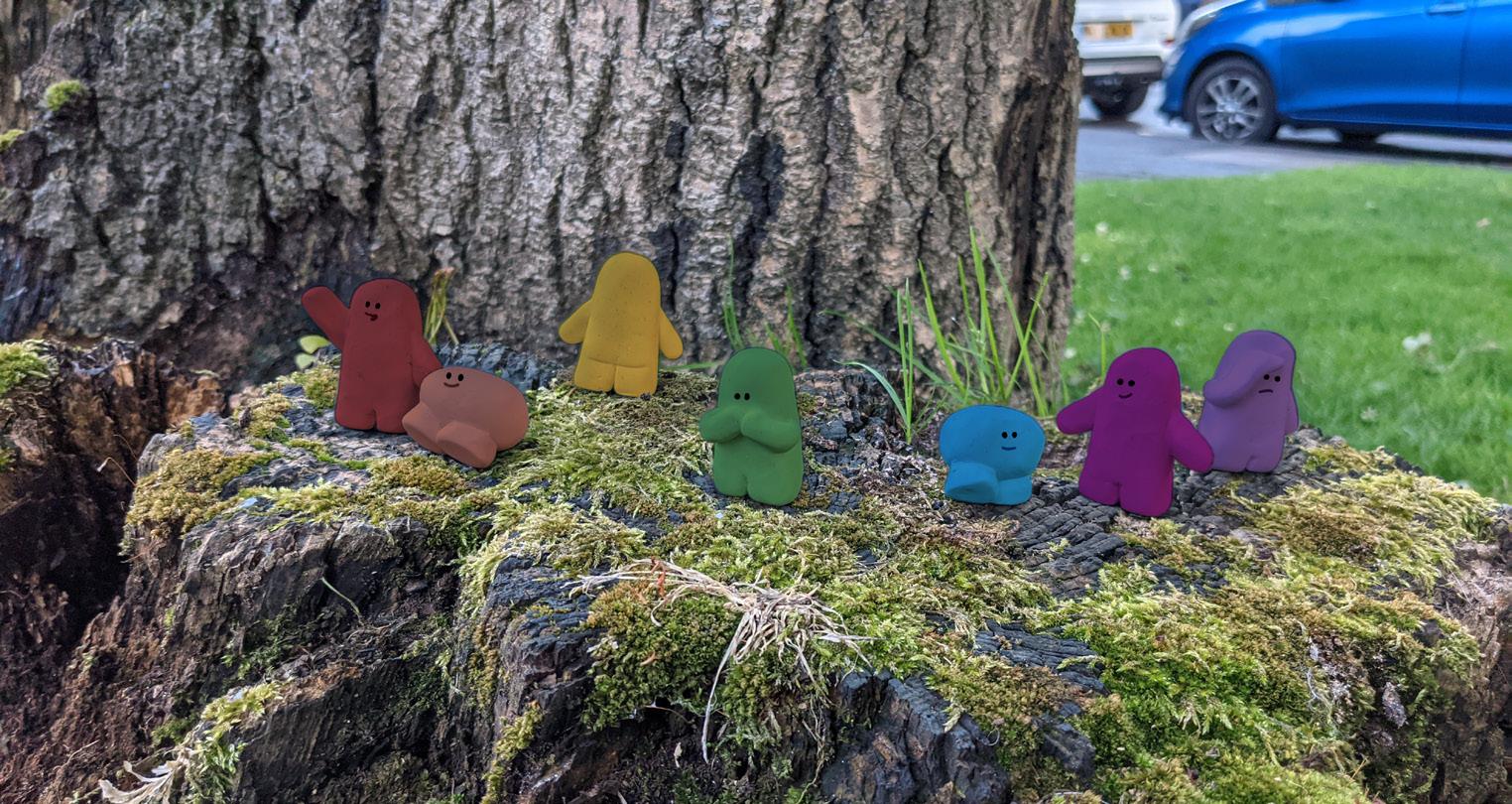
Initially I thought the small Mashu may be the children of the species, but no. I have never seen signs of the smaller Mashu sprouting arms and growing taller, and even managed to track and observe the same group over several months in case of a rapid transformation, but none occurred.
Much like a Pug and a Great Dane, it seems they’re just the same species but in a different shape.


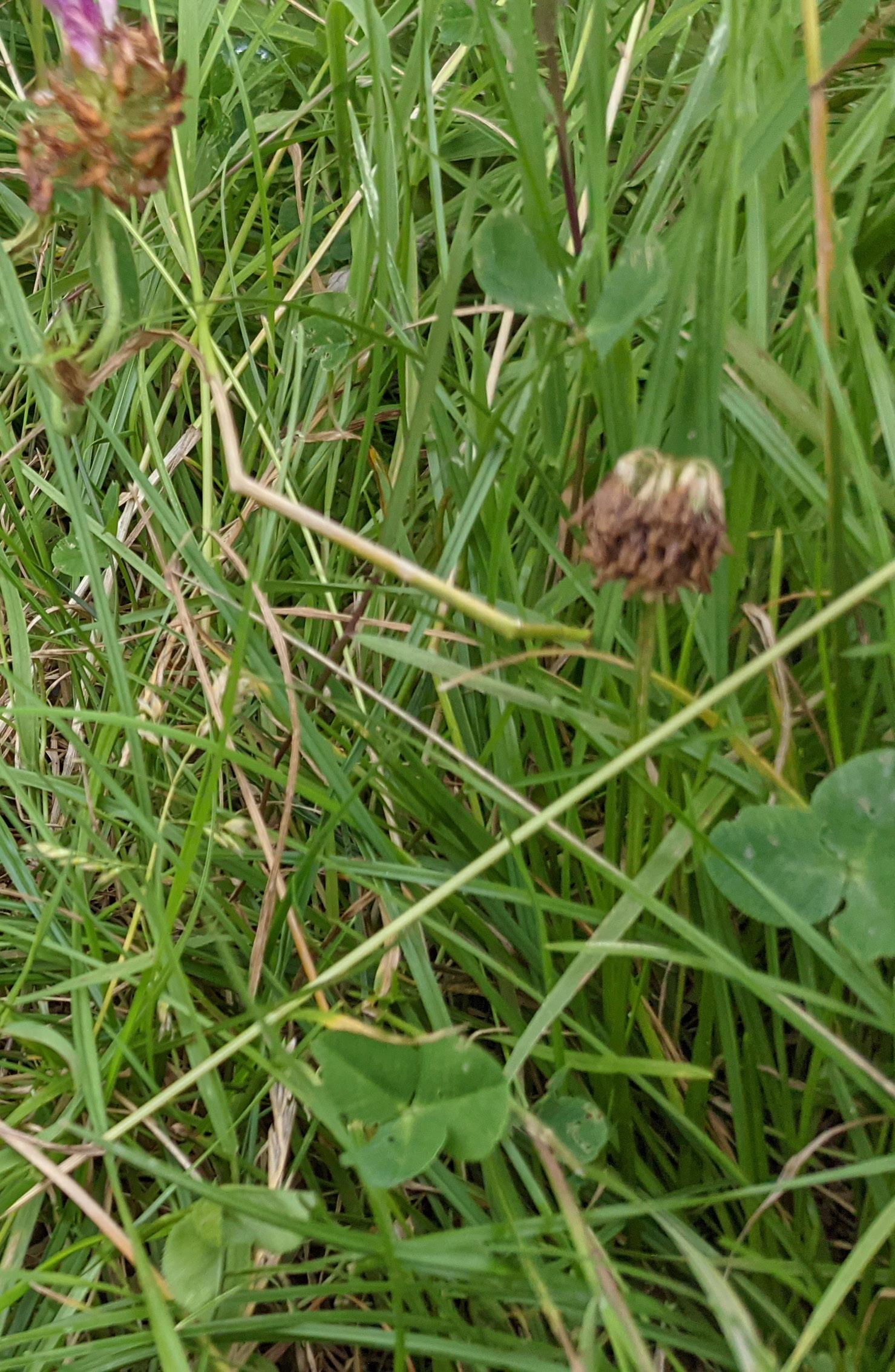


Mashu are very social creatures and don’t like to be alone. They tend to travel around in groups of four to ten, although there appears to be no upper limit on how many will gather or travel together.
Occasionally you will see pairs or trios, but in almost all cases you will find they have momentarily wandered off from a larger group nearby and will soon return.

I have never found a single Mashu by themselves.
There appears to be no form of hierarchy, with all Mashu being equal. Decisions are made by a group consensus. Sometimes there are minor squabbles, but never any major arguments or fights, and any differences of opinion are quickly forgiven and forgotten.
I refer to “groups” rather than families or tribes, as they appear to be one big family. Two or more groups have been known to meet, mingle, and separate again into entirely different groups and go their separate ways. As long as a Mashu is with other Mashu, they are happy.
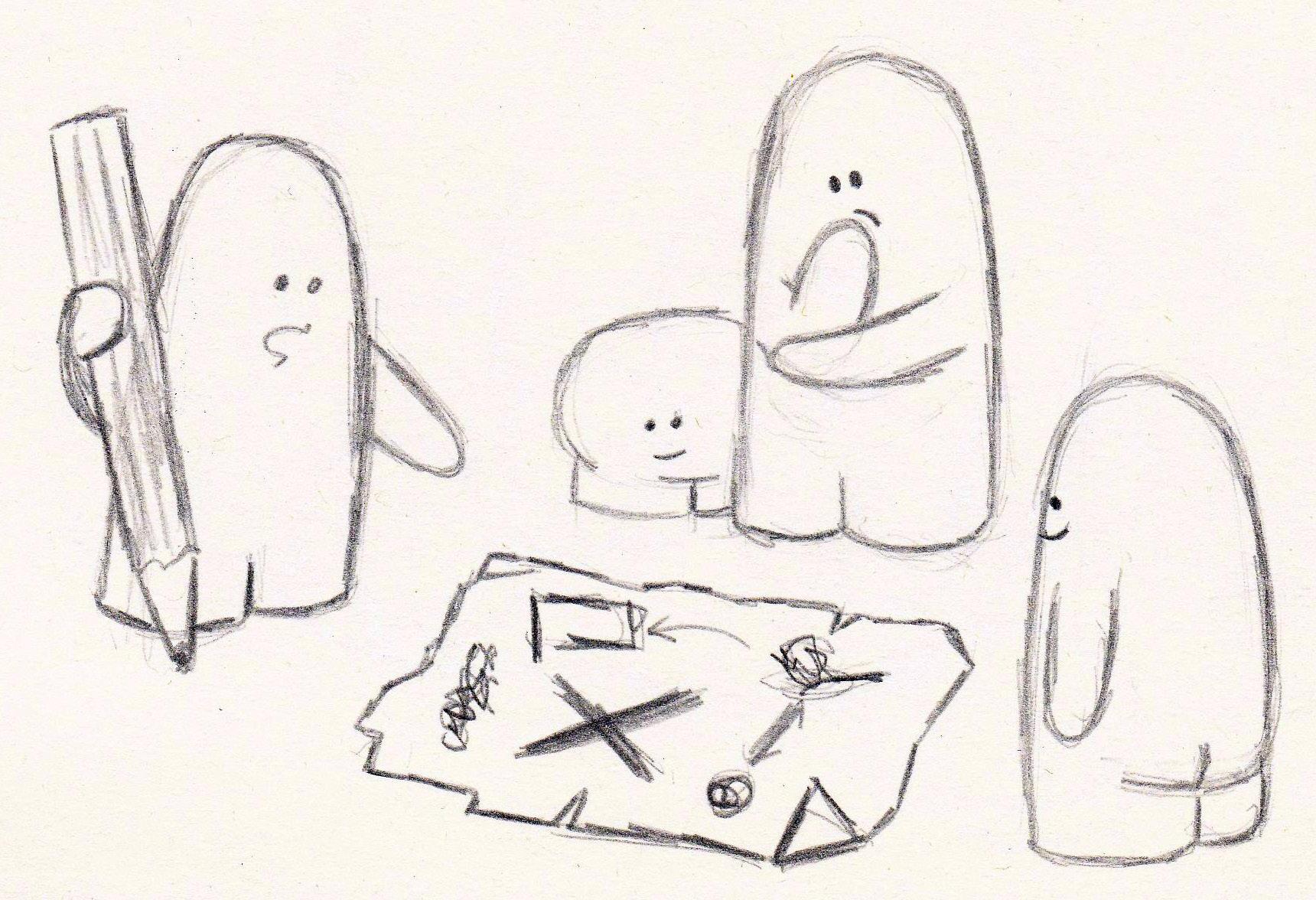
They also don’t seem to have any form of gender, and so I refer to them with they/them pronouns.
The Mashu communicate amongst themselves with their own spoken language. It is a quiet, chattery sort of speech, but as of yet I have been unable to get a clear recording, nor been able to decipher any sort of individual words for translation from my observations.
They don’t appear to have any form of written language, although they have been known to draw crude pictograms when trying to convey more complex ideas.





Mashu behaviour is entirely based around doing what seems like a fun idea at the time:
• Hungry? Let’s find some food!
• Spotted another group of Mashu / an animal / bird / insect? They’re our friends! Let’s go and say hello.
• Seen an interesting object? Let’s go check it out. Maybe we can find a use for it, or at least find a way to play with it for a while.
I have seen one group taking it in turns to carry around a single paperclip, evidently revered as some sort of treasure.

The Mashu don’t seem to actively hide from humans, but somehow, we generally don’t notice them as they go about their business.

They don’t seem to notice us either. Maybe we’re too big and they’re too small? Or we’re too busy to look down and they’re too busy to look up?

They are intelligent enough to use tools, having been observed using shells as containers for water, and found various uses for string, pencils, and rubber bands.



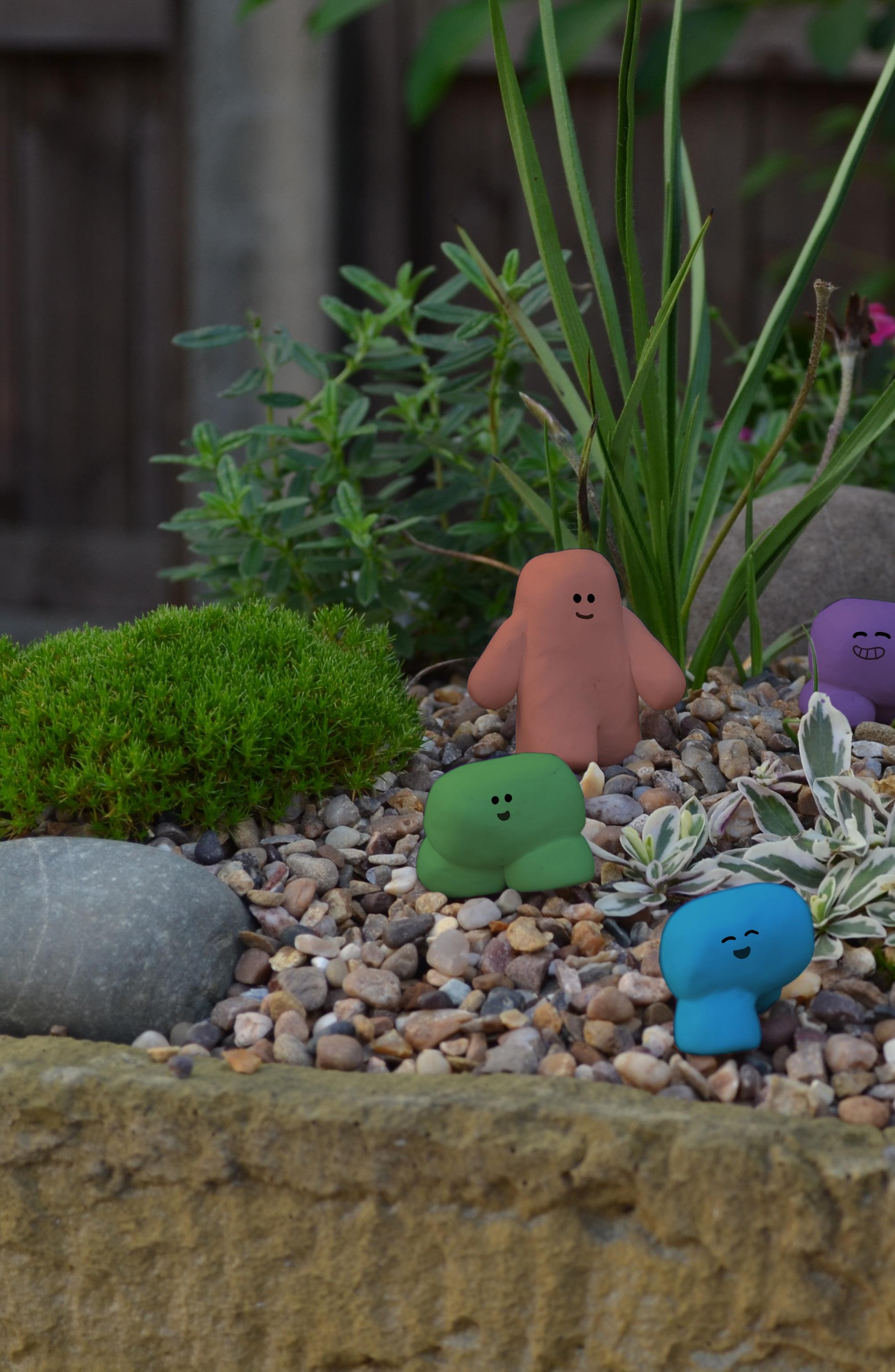





Out in the wild, the Mashu mainly forage for berries, nuts and water, often sharing with local wildlife.
However, they will adapt their diet based on whatever they can find, always eating the tastiest foods first, and will try anything once.
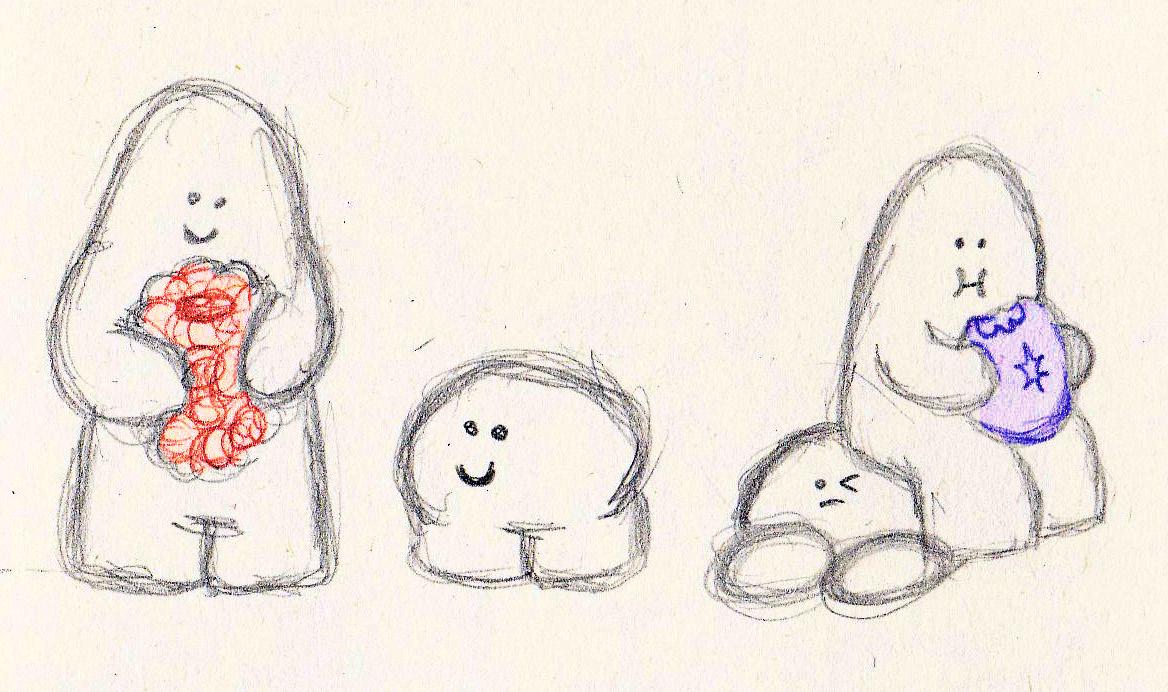
If they find themselves in your kitchen, they will inevitably make their way into your snacks and sweets cupboard.
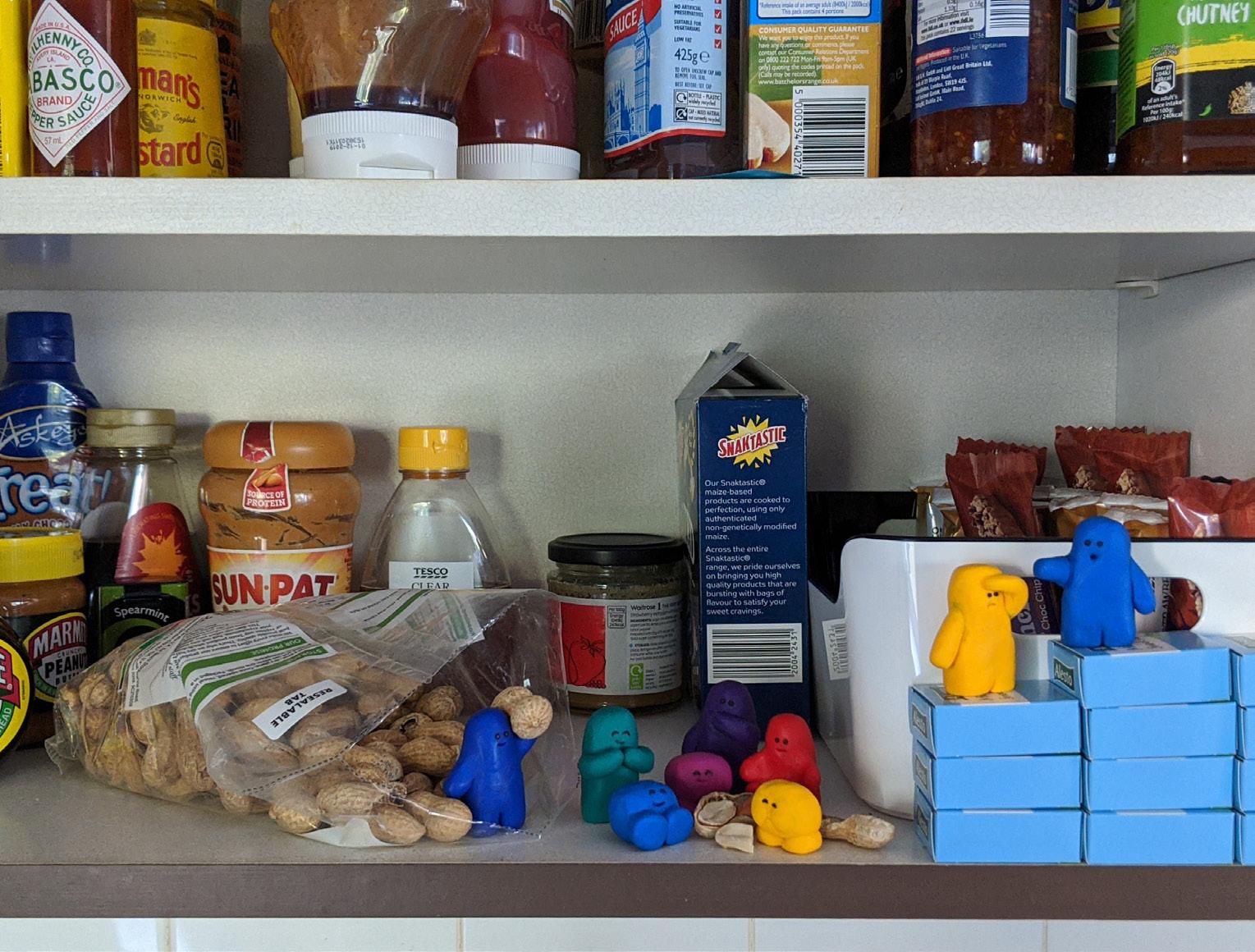




The Mashu are a nomadic species, travelling from place to place in their various groups, and seem comfortable in every biome that I’ve been able to observe them in.
In general, they travel and play by day, settling down to make camp and sleep at night, but they’re certainly not opposed to naps or a bit of night-time exploring.
When possible they will move into an existing nest or burrow for the night, sharing with the original occupants who don’t seem to mind.

Similarly, they will also find their way into human habitats, usually just passing through, making themselves comfortable in homes, shops, schools, offices, etc.
They tend to favour places with good food, interesting things to play with, and pets or other animals to meet.
Ever noticed your cat apparently staring at nothing? Maybe they’re supervising a visiting party of Mashu…

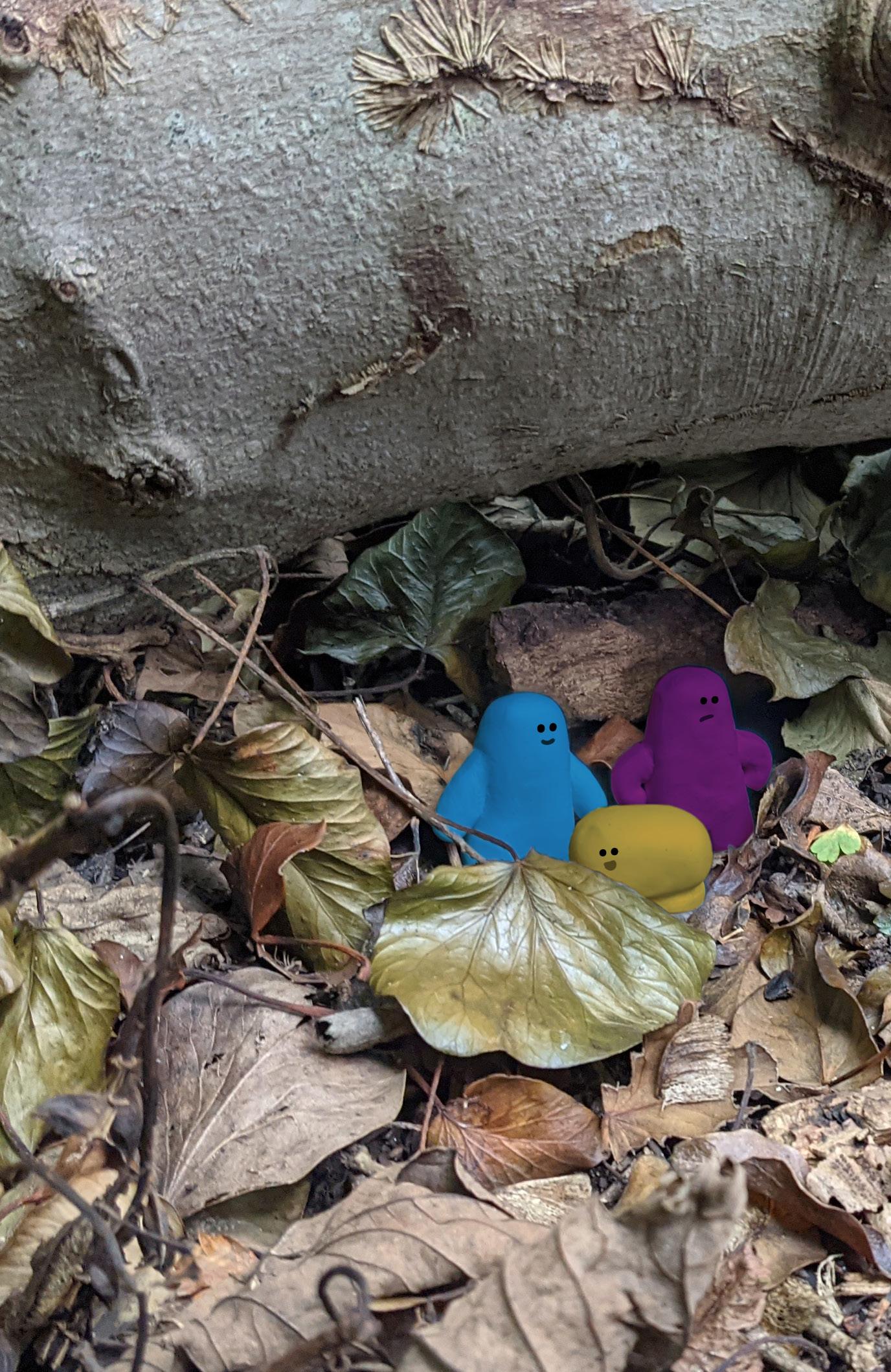


There are a variety of ways you can encourage the Mashu to visit your garden, and maybe stay for a while.

Bird boxes will give the Mashu a warm and dry place to set up camp and, being high up, will give them a good view of your garden and all the places they can explore.
There’s no need to worry about existing tenants. The birds and the Mashu will cohabitate happily, and Mashu have been known to help look after eggs and source food for parents and young.
Planting climbing plants such as ivy, clematis, or jasmine nearby will help the Mashu access the bird boxes, but don’t worry too much about falls. Mashu tend to bounce without suffering any injury.
Down on ground level, you can also provide housing for Mashu by piling dead wood or rocks somewhere shady. Anything with nooks and crannies they can climb into, explore, and settle down.
Another way to provide shelter is by leaving a patch of grass to grow, complete with weeds and wildflowers. This is a perfect Mashu playground, providing opportunities for exploring, hide-and-seek, and climbing, as well as enjoying the flowers and observing the insects that visit them.



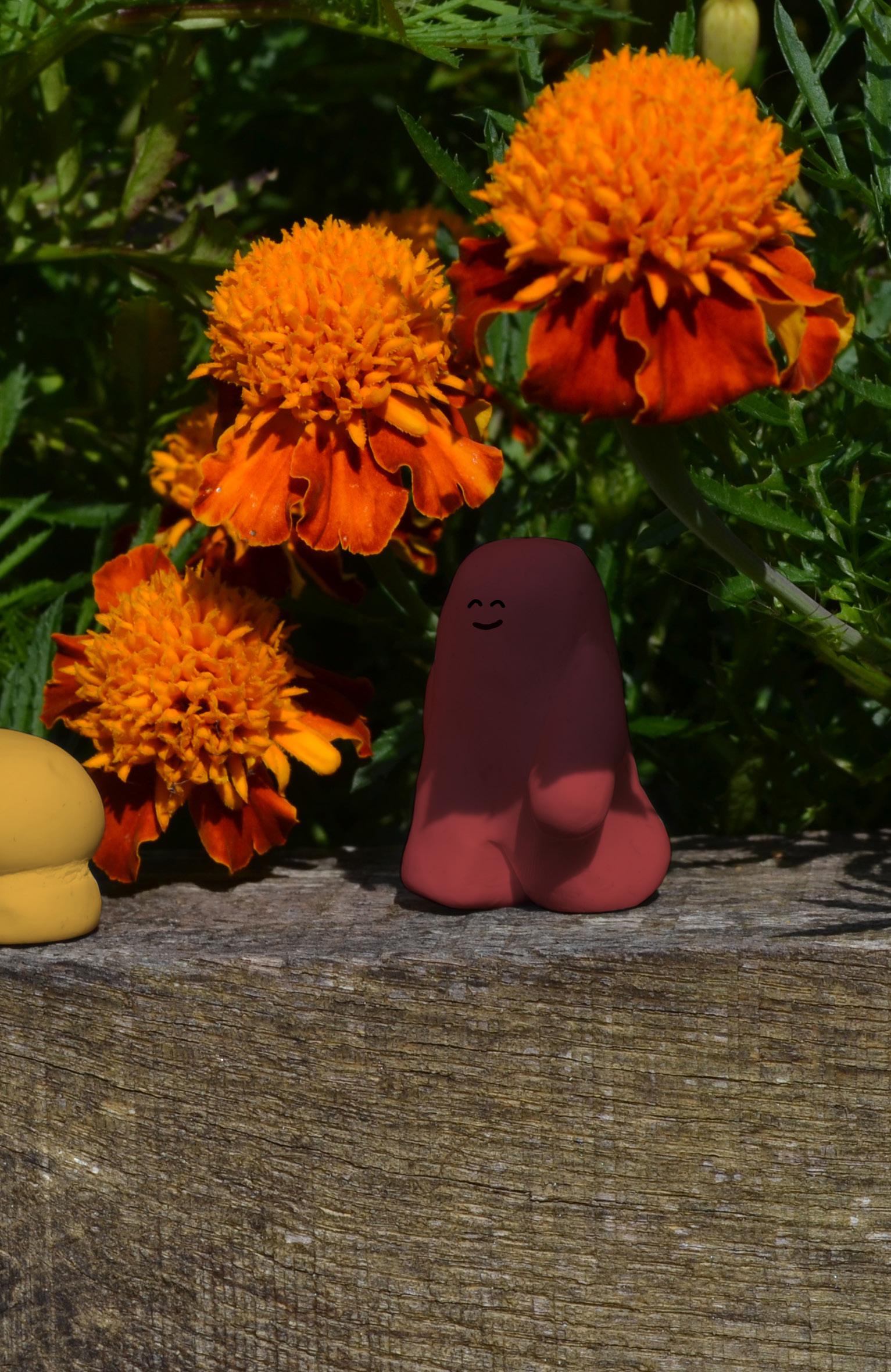



Encouraging Mashu in your home can be more difficult. As mentioned before, they have a good relationship with animals, so a happy, healthy, well looked after pet living in your home will show them that it is a safe place to stay.
They are also attracted to houseplants. Preferably these will be healthy and well looked after, although the Mashu have been known to assist with watering when plants are beginning to wilt.

Of course, a well-stocked snack and sweets cupboard won’t hurt your chances either.

Interestingly, much like puffins you can also attract the Mashu, both inside and outside, with decoys.
By placing models of the Mashu, no matter how accurate or crude, they will be spotted by the Mashu who will then come over to greet them. The Mashu are far from being disappointed by finding them to be fakes and seem to get endless amusement from their discovery.
Admiring them from every angle, copying poses, and even pretending to be decoys themselves to play tricks on their friends.
You may occasionally find one of your decoys goes missing. This usually means visiting Mashu decided to adopt it and take it with them.







While exploring the British Museum in London, I stumbled upon the artefact pictured opposite.
Labelled as Hand-modelled standing female figure, probably a goddess, I believe it could be evidence that the Mashu have been with us for a long time with the figures description stating it was “Probably made in Argos about 600-550 BC”.
Although the figure does differ in some ways from the Mashu I have observed, there could be an explanation for this.
Maybe the artist only had fleeting glimpses of the Mashu, as I did with my initial observations?
Alternatively, this could be what the Mashu of the time looked like, and they have evolved and changed over the two and a half thousand years since?
Or perhaps this is another form of Mashu still existing somewhere in the world, just waiting to be rediscovered...?
I will certainly be looking out for further evidence of historical Mashu

